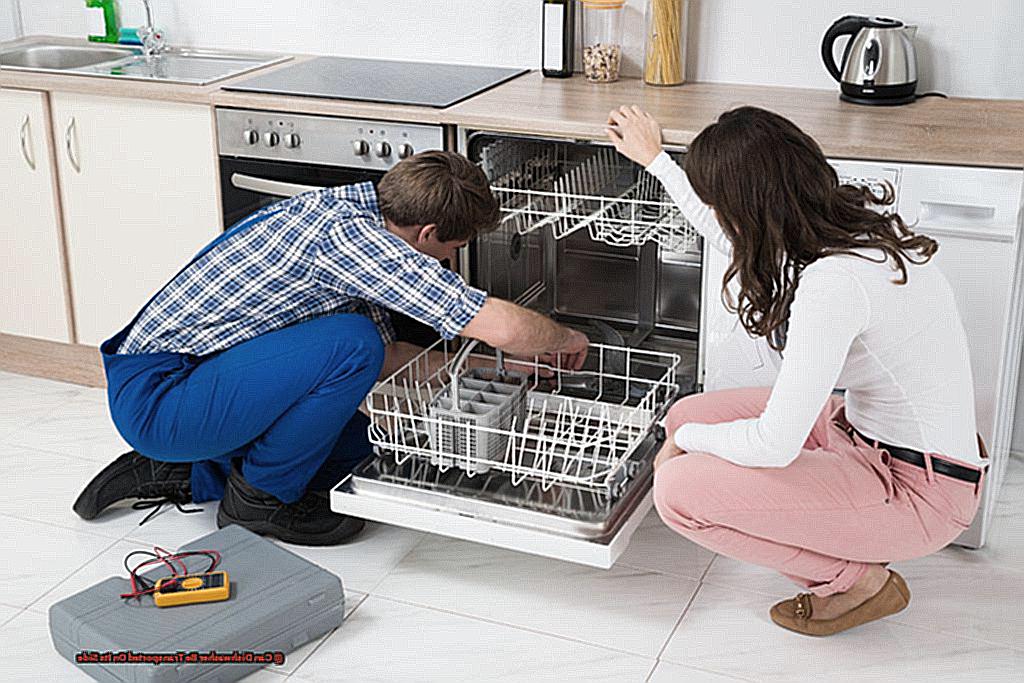Are you planning a move and wondering if it’s possible to transport your dishwasher on its side? Or are you a professional appliance installer seeking the most efficient way to transport dishwashers for your clients? The debate over transporting dishwashers on their sides is heating up, with some claiming it’s safe while others advise against it. So, what’s the truth?
In this blog post, we’ll delve into this hot topic and provide you with all the necessary information to make an informed decision. Here are some key points we’ll cover:
- The advantages and disadvantages of transporting a dishwasher on its side
- Essential tips for securely packing your dishwasher during transportation
- Insights from appliance manufacturers and installers
- Common misconceptions about moving dishwashers on their sides
- Best practices for handling and installing dishwashers after transportation
Before making any moves, be sure to read this post first.
Let’s get started.
Contents
Is it Possible to Transport a Dishwasher on its Side?
Moving a dishwasher on its side is not recommended as it can cause harm to internal parts and the door seal. However, in unavoidable circumstances where tilting is necessary, it is crucial to take precautionary measures to minimize the risk of damage.
Preparation is key when transporting a dishwasher on its side. Before moving the appliance, ensure to disconnect it from power and water supply, empty its contents, and thoroughly clean it to avoid any spills or leaks. Additionally, secure any loose components or accessories inside the dishwasher.
Utilizing proper packaging materials is essential when transporting a dishwasher on its side. This involves using moving pads or blankets to protect the appliance from bumps and scratches during transportation. The chosen vehicle must also be spacious enough to accommodate the dishwasher without squeezing or crushing it.
When loading the dishwasher onto the vehicle, ensure it is correctly positioned with the door facing towards the top or bottom. It is crucial to secure the appliance in place using ropes or straps to prevent any movement during transportation.
While it is generally advised to transport dishwashers in an upright position, if tilting is necessary, refer to the manufacturer’s guidelines or seek professional assistance. Professional movers should also be informed about the delicate nature of dishwashers and consider obtaining insurance or warranties for added protection during transport.
After successfully transporting the dishwasher on its side, inspect for any leaks or damages and verify proper functioning of the door seal before reinstalling the appliance. It is also recommended to leave the dishwasher upright for a few hours before use, allowing internal parts to settle back into place.
So, while not ideal, it is possible to transport a dishwasher on its side with appropriate preparation and precautions.
What to Consider Before Transporting Your Dishwasher on Its Side
| Consideration | Description |
| Potential Internal Damage | Moving a dishwasher on its side can cause internal parts to shift and potentially become damaged, leading to costly repairs or rendering the appliance unusable. |
| Possible Crushing or Squeezing | If the transportation vehicle is not large enough to fit the dishwasher, it may get crushed or squeezed, resulting in irreparable damage. |
| Unstable Movement Risks | Improperly securing the dishwasher during transport can cause it to shift or bounce, potentially causing damage to the appliance and harm to the person handling it. |
| Risk of Leakage | If the dishwasher is not drained of water before transportation, there is a possibility of leakage, which can damage the appliance and other items in the vehicle. |
| Danger of Electrical Hazards | If the dishwasher is not disconnected from power sources before transportation, there is a risk of electric shocks or other electrical hazards. |
Safety Measures:
To avoid these risks and ensure a safe and successful transportation of your dishwasher, please take the following precautions:
- First and foremost, consider if transporting your dishwasher on its side is a necessity. If possible, it is best to transport it in an upright position.
- Before moving the appliance, make sure to disconnect it from any power sources and remove any racks or accessories inside.
- To prevent leakage during transportation, be sure to empty and drain all water from the dishwasher beforehand.
- Use a spacious transportation vehicle that can comfortably fit the dishwasher without causing any damage.
- Properly secure the dishwasher in the vehicle to avoid any shifting or bouncing during transportation.
- If needed, utilize a hand truck or dolly to transport the dishwasher in an upright position.
- To protect the appliance from damage during transportation, use padding and suitable packing materials.
In conclusion, transporting a dishwasher on its side should be avoided whenever possible.
When NOT to Transport Your Dishwasher on Its Side
When you are transporting your dishwasher, it is important to take extra care and avoid laying it on its side. This seemingly simple act can actually cause serious damage to the internal parts of your dishwasher, such as the water pump, drain pump, and float switch. Not only that, but it can also cause these components to shift, which can lead to malfunctions and further damage.
One of the main components at risk when transporting a dishwasher on its side is the door seal. If this seal becomes compromised during transportation, it can result in water leaks and potentially expensive repairs. To avoid this risk, it is crucial to properly prepare and handle your dishwasher during transportation.
Taking the time to transport your dishwasher correctly can save you from costly repairs and malfunctions in the future. Remember to always handle your dishwasher with care and avoid laying it on its side to ensure its proper functioning.
Conclusion
In conclusion, the question of whether dishwashers can be transported on their side is a contentious one, with valid arguments on both sides.
While it is generally not recommended to do so due to potential risks of damage and seal compromise, there are situations where it may be unavoidable. However, proper preparation and precautions must be taken to minimize these risks.
This includes disconnecting power and water sources, securing the appliance in a spacious vehicle with adequate padding, and allowing time for components to settle before use. It is also crucial to handle the dishwasher with care during loading and unloading.
Ultimately, while transporting a dishwasher on its side should be avoided whenever possible, following these tips can help ensure a safe and successful move for your appliance.






